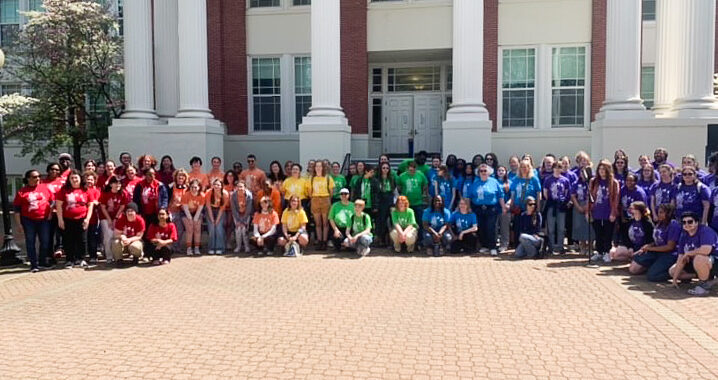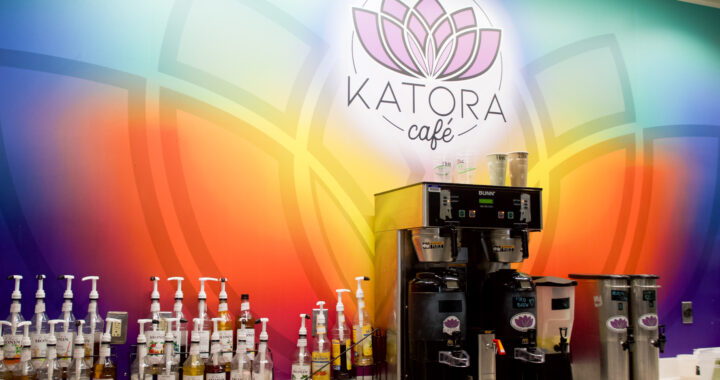Classes embrace the virtual: follow the blog
5 min readBy Megan Eichenberg
For students in assistant professor of Spanish Shara Voisard’s Grammar and Conversation course, logging on to Facebook involves more than updating statuses and posting on walls.
Since Sept. 18, Voisard and the students enrolled in her SPAN 318 speaking intensive course have been utilizing the social networking tool to respond to and reflect on course material.
“It gives people who aren’t native speakers of Spanish more time to react,” Voisard said, who finds that the site seems to work well in conversation based classes because students can think about a subject on their own time before writing a post about the topic.
The SPA 318 Otoño 2009 academic Facebook group currently hosts five discussion topics with 80 posts of student responses, some relating an experience they had that is similar to course readings and film segments.
Their virtual responses, each written in Spanish, are among the 2 billion pieces of content shared each week on Facebook.
A computer science course project her husband completed in 2007 inspired Voisard to incorporate the website into her upper level courses.
“I decided to use Facebook instead of blogging because you have all the postings on the same page and it’s easier to read,” Voisard said, who has found that most people enrolled in her courses are among the 300 million people who already have Facebook accounts.
Other social networking tools are being utilized in colleges across the nation and in classrooms at Mary Washington.
In September, Faculty Focus, a higher education e-newsletter, released results from a survey of 1,958 higher education professionals regarding their use of the website Twitter.
According to the report, 30.7 percent of the responders say they use Twitter in some capacity relating to education, while 20.6 percent of non-users say there is a “50/50 chance” they will integrate the micro-blogging service into their classroom in the next two years.
At Mary Washington, Assistant Professor of English Zach Whalen is using Twitter in his ENGL 376mm New Media: The Virtual and the False course, which explores cultures of New Media in relation to the dominant metaphors of Virtual Reality and Alternate Reality.
Each student in the class has a Twitter account, Whalen said. When students write a “tweet” up to Twitter’s text limit of 140 characters per post, they can use the hashtag #ENGL376 to categorize and track each tweet associated with the course.
Whalen uses twhirl, a social software desktop client, which is set up to alert him when students use the hashtag. The Tweets also appear on the class website at http://real.zachwhalen.net/node, and each time a student composes a required blog entry, a link to their entry appears in a link on their personal Twitter page.
“[Twitter] makes it very easy for me to be available to students,” Whalen said, explaining that he and students can have discussions with each other and post questions about course material on Twitter beyond the physical meetings of the class.
Whalen said he has heard of professors at other schools having live Twitter streams projected on screens during class time to track student comments during a lecture.
While Whalen said he does not actively exhibit Tweets relating to the course this way during class time, he does not mind if students occasionally use the site for note taking.
“I’m okay with that as long as they’re engaged in the conversation,” Whalen said. “It’s another way to communicate and have a steady conversation.”
On Oct. 29, Whalen’s class assembled in Combs 237 for an evening screening of The Blair With Project. Throughout the 86-minute movie, students posted their own questions and comments on Twitter and responded to the remarks of their classmates.
The New Media: The Virtual and the False course has also attracted the attention of readers outside of the class, including one of “The Blair Witch” project’s producers, who was informed of the class’s discussion by another Twitter member.
Whalen said people who have careers in creating video games have also reached out to the class after discovering its presence on Twitter.
The site also presents opportunities for professional development and networking with colleagues at Mary Washington and other schools, Whalen said.
The University of Mary Washington, the Office of Career Services and the James Farmer Multicultural Center each have official Facebook and Twitter accounts.
More recently, the Office of Student Activities became a member of Twitter and used their inaugural Nov. 9 tweet to encourage students to attend Bingo night.
Courtney Chapman, assistant director of the James Farmer Multi Cultural Center (JFMC), said staff members of the division of Student Affairs at Mary Washington were encouraged to embrace technology and use it to their benefit in higher education during a leadership meeting last year with Tony D’Angelo, founder of the College EmPowerment Company.
“The Center decided that the best way to get information to the students at the University of Mary Washington was to put this information where the students are,” Chapman said. “We have seen from recent students that students are on the internet. It seemed logical to utilize tools like Facebook and Twitter to reach the masses.”
In addition to the JFMC online presence, Chapman said the Center also works closely with the Office of Design Services to create appealing and effective marketing tools to market and publicize events, including pamphlets, fliers, calendars, and postcards.
“It seems that all of the different ways we market have different target audiences,” said Champan. “I think Twitter and Facebook target the student body population and the print venues target the community, faculty and staff better.”
Chapman said the JFMC used Facebook last year to mostly publicize events sponsored by the Center and multicultural student organizations.
When Facebook launched new fan page options earlier this year, Chapman decided to create a fan page for the JFMC and go live on Twitter.
“One of the greatest advantages is that students are constantly connected to these two venues,” Chapman said. “It’s using something that students are very familiar and comfortable with to grab their attention about what’s going on on-campus.”
The sites are also free, which Chapman cites as other advantage.
“In a time when budgets are so tight, it is great to find and utilize effective tools that don’t cost anything,” she said. “…These sites make it so easy to create, operate, and maintain. It’s technology made easy.”
Chapman said the sites have been extremely successful as marketing tools. She has noticed that more people tend to hear about the center’s events this year. There are also more fans on the JFMC Facebook page now than there were group members on the original Facebook group.
“These are used mostly for promotional purposes and advertising, but I could see them being able to play more of a role in discussions fostered at the JFMC,” said Chapman. “I would love to continue to envision a larger role that these sites could play in the mission of our center.”











